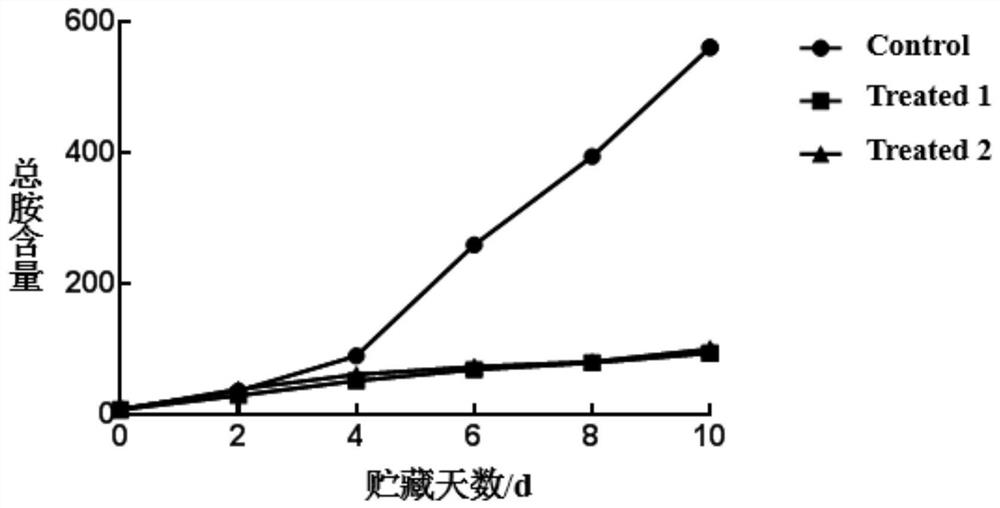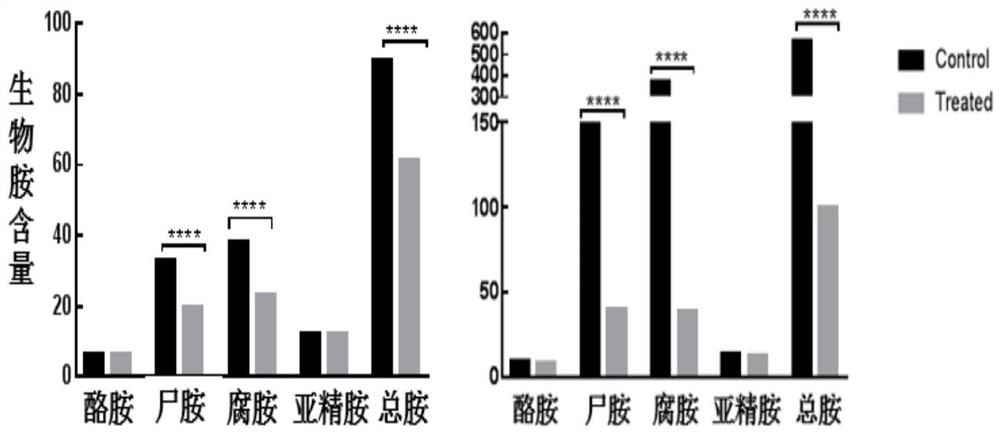peg-acs/luxr-siRNA nanocomplex and its application and method for reducing biogenic amines in Litopenaeus vannamei
A PEG-ACS and nanocomposite technology, which is applied in the field of food quality and safety, can solve the problems of high operation requirements, lower food quality, and ineffective effects, and achieve wide application prospects, lower biogenic amine content, and delay the process of corruption. Effect
- Summary
- Abstract
- Description
- Claims
- Application Information
AI Technical Summary
Problems solved by technology
Method used
Image
Examples
Embodiment 1
[0055] Example 1: Effect of PEG-ACS / luxR-siRNA nanocomplex in Litopenaeus vannamei
[0056] (1) Preparation of ACS: Weigh 1g of chitosan, dissolve it in TEMED / HCl buffer solution with pH 5.0, then add 1130mg of EDC and 685mg of NHS coupling agent to the solution, stir well, then add Arginine with 80% molar weight of the polysaccharide amino group was reacted at room temperature for 8 hours under magnetic stirring, and then desalted water dialysis and freeze-drying were performed to obtain arginine-modified chitosan.
[0057] (4) Preparation of PEG-ACS: Take 2.5 mL of 10 mg / mL arginine-modified chitosan, add 25 mg of PEG-SPA, and react at room temperature for 4 h. Use a dialysis bag with a molecular weight cut-off of 14,000 to remove unreacted PEG. PEGylated arginine-modified chitosan was obtained.
[0058] (5) Preparation of siRNA solution: 10D siRNA was dissolved in 125 μL DEPC water to prepare siRNA solution with a concentration of 20 μM, and stored at -20° C. for later us...
Embodiment 2
[0071] Example 2: Effect of PEG-ACS / luxR-siRNA nanocomplex in Litopenaeus vannamei
[0072] (1) The preparation of ACS: take by weighing 0.5g chitosan, be dissolved in the TEMED / HCl buffer solution of pH 4.5, then add the EDC of 567mg and 340mg NHS coupling agent in this solution, after stirring evenly, then add and Arginine with 50% molar weight of the chitosan amino group was reacted at room temperature for 6 hours under magnetic stirring, and then desalted water dialysis and freeze-drying were performed to obtain arginine-modified chitosan.
[0073] (4) Preparation of PEG-ACS: Take 2.5 mL of 10 mg / mL arginine-modified chitosan, add 25 mg of PEG-SPA, and react at room temperature for 4 h. Use a dialysis bag with a molecular weight cut-off of 14,000 to remove unreacted PEG. PEGylated arginine-modified chitosan was obtained.
[0074] (5) Preparation of siRNA solution: 10D siRNA was dissolved in DEPC water to prepare an siRNA solution with a concentration of 18 μM, and stored...
PUM
| Property | Measurement | Unit |
|---|---|---|
| particle diameter | aaaaa | aaaaa |
Abstract
Description
Claims
Application Information
 Login to View More
Login to View More - Generate Ideas
- Intellectual Property
- Life Sciences
- Materials
- Tech Scout
- Unparalleled Data Quality
- Higher Quality Content
- 60% Fewer Hallucinations
Browse by: Latest US Patents, China's latest patents, Technical Efficacy Thesaurus, Application Domain, Technology Topic, Popular Technical Reports.
© 2025 PatSnap. All rights reserved.Legal|Privacy policy|Modern Slavery Act Transparency Statement|Sitemap|About US| Contact US: help@patsnap.com



